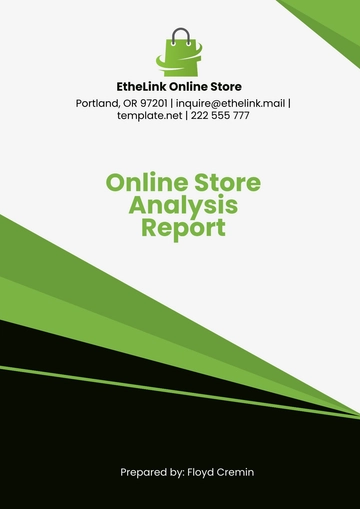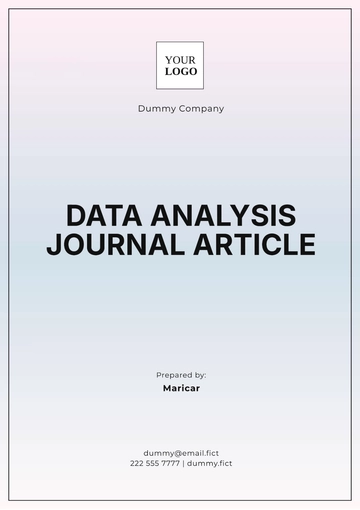Free Car Rental Analysis Guide

A. Introduction
In the competitive landscape of the car rental industry, understanding market trends, customer preferences, and operational efficiencies is essential for business success. This Car Rental Analysis Guide from [Your Company Name] offers a comprehensive framework for evaluating key aspects of the car rental business, including market dynamics, financial performance, customer satisfaction, and operational practices. By focusing on data-driven insights and best practices, this guide aims to help car rental companies enhance their strategic planning, optimize their service offerings, and improve their overall business performance.
The guide covers various analytical approaches, from market research techniques and financial metrics to customer feedback mechanisms and operational assessments. It provides a structured methodology for evaluating both quantitative data, such as revenue and utilization rates, and qualitative factors, like customer satisfaction and service quality. By leveraging these insights, [Your Company Name] seeks to empower car rental businesses to make informed decisions that drive growth, streamline operations, and enhance customer experiences. Whether you are a small local rental agency or a large national chain, this guide will serve as a valuable resource for achieving your business objectives and staying ahead of industry trends.
B. Data Collection
Effective data collection is the foundation of any comprehensive car rental analysis. This section outlines key methods and tools for gathering relevant data to evaluate business performance and make strategic decisions.
1. Market Research
Market research involves collecting data on industry trends, competitor activities, and customer demographics. This can be done through:
Surveys and Questionnaires: Distribute surveys to customers to gather feedback on service quality, pricing, and rental experience. Online tools like SurveyMonkey or Google Forms can be used.
Industry Reports: Access market research reports from firms like Statista or IBISWorld for insights into market trends, growth projections, and competitive analysis.
Competitive Analysis: Monitor competitors’ websites, social media, and promotional materials to understand their offerings, pricing strategies, and customer reviews.
2. Financial Data
Gathering financial data is crucial for assessing the profitability and sustainability of your car rental business. Key financial data includes:
Revenue and Expenses: Track monthly revenue from rentals, as well as operational expenses such as maintenance, insurance, and staffing. Use accounting software for accurate financial records.
Utilization Rates: Calculate the percentage of time vehicles are rented out compared to their availability. This helps in understanding fleet efficiency and optimizing vehicle allocation.
3. Customer Feedback
Collecting and analyzing customer feedback helps in understanding client satisfaction and identifying areas for improvement. Methods include:
Online Reviews: Analyze reviews on platforms like Yelp and Google Reviews for insights into customer experiences and common complaints.
Direct Feedback: Encourage customers to provide feedback through follow-up emails or during the rental process.
C. Data Cleaning
Data cleaning is a crucial step in ensuring the accuracy and reliability of the information used for car rental analysis. This process involves reviewing and refining data to eliminate errors, inconsistencies, and inaccuracies. Effective data cleaning helps [Your Company Name] make informed decisions based on high-quality data.
1. Data Validation
The first step in data cleaning is validating the data for correctness. This includes:
Checking for Missing Values: Identify and address any missing data points in your datasets. For instance, ensure that all rental transactions have complete information such as rental dates, vehicle details, and customer feedback. Use tools like Excel or Python libraries to find and fill in missing values.
Correcting Data Entry Errors: Look for and correct errors such as typos, incorrect figures, or inconsistent formats. Automated data validation tools can help identify anomalies like outliers or incorrect data entries.
2. Data Consistency
Ensuring consistency across your datasets is essential for accurate analysis. This involves:
Standardizing Formats: Ensure that data is presented in a uniform format. For example, standardize date formats (MM/DD/YYYY) and address formats (City, State, ZIP Code).
Harmonizing Data Sources: Combine data from different sources and ensure consistency across them. Verify that the data aligns with internal records and external benchmarks.
3. Data Deduplication
Removing duplicate records helps in maintaining a clean and accurate dataset. This includes:
Identifying Duplicates: Use data management tools to identify and merge duplicate entries. For instance, ensure that each customer or transaction is only recorded once.
Eliminating Redundant Information: Remove duplicate data points to avoid skewed analysis results. This includes eliminating repeated customer feedback or redundant rental records.
By meticulously validating, standardizing, and deduplicating data, [Your Company Name] ensures that the information used for analysis is reliable and actionable.
D. Data Analysis
The Car Rental Analysis Guide from [Your Company Name] is designed to help car rental businesses evaluate their performance and enhance their operations through systematic data analysis. This guide covers essential methods for collecting, cleaning, and interpreting data to support strategic decision-making and operational improvements.
Data Collection involves gathering market research data, financial records, and customer feedback. Effective methods include conducting surveys, analyzing industry reports, and reviewing online reviews. This data forms the basis for understanding market trends, assessing financial health, and gauging customer satisfaction.
Data Cleaning ensures the accuracy and reliability of your data. This step includes validating data for completeness, correcting errors, standardizing formats, and removing duplicates. Proper data cleaning techniques are vital for maintaining high-quality information that supports effective analysis.
Data Analysis focuses on interpreting the cleaned data to generate insights. Key analytical methods include trend analysis, financial ratio analysis, and customer satisfaction assessment. By evaluating metrics like revenue growth, vehicle utilization rates, and feedback scores, [Your Company Name] helps you identify strengths, weaknesses, opportunities, and threats.
Reporting is the final step, where findings are communicated through clear and actionable reports. This guide provides frameworks for creating reports that highlight critical insights and recommend strategies for improving business performance.
By following this guide, [Your Company Name] equips you with the tools to conduct thorough car rental analyses that drive growth and enhance service quality.
E. Market Analysis
Market analysis is a crucial component of the Car Rental Analysis Guide from [Your Company Name]. It involves evaluating various market factors to understand the competitive landscape, identify opportunities for growth, and develop strategies for business success. This section breaks down the key elements of a thorough market analysis for the car rental industry.
1. Industry Trends
Understanding current industry trends helps [Your Company Name] stay competitive and anticipate future developments. Key trends to monitor include:
Growth Projections: Analyze reports from market research firms like Statista and IBISWorld for data on market growth rates, emerging trends, and future forecasts. For instance, the shift towards electric vehicles and increasing demand for ride-sharing services are current trends that may impact traditional car rentals.
Technological Advances: Stay updated on technological innovations such as mobile app development, vehicle telematics, and online booking systems. Adopting new technologies can enhance customer experiences and streamline operations.
2. Competitor Analysis
A detailed competitor analysis provides insights into what other car rental companies are offering and how [Your Company Name] can differentiate itself. This involves:
Competitor Benchmarking: Identify major competitors and evaluate their pricing strategies, service offerings, and market positions. Tools like SimilarWeb and SEMrush can provide data on competitors’ website traffic, keywords, and online presence.
SWOT Analysis: Conduct a SWOT (Strengths, Weaknesses, Opportunities, Threats) analysis to compare [Your Company Name] against competitors. This helps identify areas where your company can improve and opportunities for growth.
3. Customer Demographics
Understanding customer demographics provides insights into who your customers are and what they need. This includes:
Customer Segmentation: Analyze demographic data such as age, income, and location to identify key customer segments. For example, business travelers, vacationers, and local residents may have different rental needs and preferences.
Behavioral Analysis: Examine rental patterns, such as peak times for rentals and common vehicle choices, to tailor services and promotions to meet customer demands.
F. Fleet Management
Effective fleet management is crucial for optimizing operations, controlling costs, and ensuring customer satisfaction in the car rental industry. This section of the Car Rental Analysis Guide from [Your Company Name] provides strategies for managing a car rental fleet efficiently, covering aspects from vehicle acquisition to maintenance and utilization.
1. Fleet Acquisition and Composition
The initial step in fleet management is to acquire vehicles that meet customer demand and business goals. Key considerations include:
Vehicle Selection: Choose vehicles based on market demand and customer preferences. Analyze rental trends to decide on the mix of economy, luxury, and specialty vehicles. For example, if there is a high demand for electric vehicles or SUVs, adjust your fleet composition accordingly.
Acquisition Strategies: Consider different acquisition methods such as leasing versus purchasing. Leasing can offer flexibility and lower upfront costs, while purchasing can be more cost-effective in the long run. Use tools like fleet management software to compare costs and benefits.
2. Maintenance and Repairs
Regular maintenance and timely repairs are essential for keeping the fleet in optimal condition. Effective strategies include:
Scheduled Maintenance: Implement a preventive maintenance schedule to avoid breakdowns and extend the lifespan of vehicles. This includes routine checks like oil changes, tire rotations, and brake inspections. Tools like Fleet Complete or Geotab can help manage maintenance schedules and track service history.
Repair Management: Develop a process for handling repairs quickly and cost-effectively. Establish relationships with reliable repair shops or consider in-house repair services for frequent issues. Keep detailed records of repairs to monitor trends and manage repair costs.
3. Utilization and Optimization
Maximizing vehicle utilization and optimizing fleet performance are key to improving profitability. Strategies include:
Fleet Utilization Tracking: Monitor vehicle usage to ensure optimal rental rates and minimize downtime. Track metrics such as rental frequency, vehicle availability, and rental durations using fleet management systems. Adjust fleet size and composition based on usage patterns.
Dynamic Pricing: Implement dynamic pricing strategies to adjust rates based on demand fluctuations. Use data analysis to set competitive prices during peak and off-peak periods. Tools like Revenue Management Systems (RMS) can automate price adjustments based on demand forecasts.
4. Customer Satisfaction
Ensuring high levels of customer satisfaction is critical for repeat business and positive reviews. Key practices include:
Customer Feedback: Collect and analyze customer feedback to identify areas for improvement. Use surveys, review platforms, and direct communication to gather insights into vehicle conditions, rental processes, and service quality.
Quality Control: Regularly inspect vehicles for cleanliness and condition before and after rentals. Ensure that vehicles meet safety and quality standards to provide a positive rental experience.
G. Pricing Strategy
A well-crafted pricing strategy is essential for maximizing revenue and maintaining a competitive edge in the car rental industry. At [Your Company Name], our approach to pricing encompasses several key elements to ensure we meet business objectives and customer needs.
1. Market-Based Pricing
We analyze competitor pricing and market conditions to set competitive rates. By monitoring local competitors and market trends, [Your Company Name] adjusts our prices to remain attractive to potential customers while ensuring profitability.
2. Dynamic Pricing
Dynamic pricing adjusts rates based on demand, seasonality, and booking lead times. By using algorithms to vary prices, [Your Company Name] optimizes revenue during peak periods and offers competitive rates during slower times. Revenue management systems like Revenue Management Solutions (RMS) can automate this process.
3. Promotional Offers
We implement targeted promotions and discounts to attract customers. This includes limited-time offers, loyalty rewards, and special rates for corporate clients. These promotions are designed to increase bookings and encourage repeat business.
H. Customer Analysis
Customer analysis is a fundamental component of the Car Rental Analysis Guide from [Your Company Name]. It involves understanding customer behavior, preferences, and satisfaction to tailor services and improve business outcomes. This section details methods for conducting effective customer analysis to enhance service quality and drive growth.
1. Customer Segmentation
Identifying and analyzing different customer segments helps [Your Company Name] target services and marketing efforts effectively. Key segments to consider include:
Demographic Segmentation: Analyze customer data based on age, income, occupation, and location. For instance, business travelers might prioritize convenience and premium services, while budget-conscious vacationers may look for affordable rental options. Tools like Google Analytics and CRM systems can provide insights into customer demographics.
Behavioral Segmentation: Examine customer behaviors such as rental frequency, vehicle preferences, and booking channels. Understanding whether customers prefer online bookings or walk-ins, and their choice between economy and luxury vehicles, can help tailor marketing strategies and service offerings.
2. Customer Feedback and Satisfaction
Collecting and analyzing customer feedback is essential for assessing service quality and identifying areas for improvement. Methods include:
Surveys and Reviews: Use post-rental surveys and online review platforms to gather feedback. Questions should address satisfaction with vehicle condition, rental process efficiency, and customer service experiences. Tools like SurveyMonkey and Trustpilot can facilitate feedback collection and analysis.
Net Promoter Score (NPS): Implement NPS surveys to measure customer loyalty and likelihood of recommending [Your Company Name] to others. A high NPS indicates strong customer satisfaction, while a low score reveals areas for improvement.
3. Customer Lifetime Value (CLV)
Calculating CLV helps [Your Company Name] understand the long-term value of customers and justify investments in customer retention. CLV can be calculated using the formula:

By understanding CLV, [Your Company Name] can develop strategies to enhance customer retention and maximize profitability.
4. Customer Journey Mapping
Mapping the customer journey helps identify touchpoints and improve the rental experience. Key touchpoints include the booking process, vehicle pickup and drop-off, and post-rental follow-up. Analyzing each stage of the customer journey helps [Your Company Name] identify pain points and opportunities for enhancing the overall rental experience.
I. Performance Metrics
Performance metrics are essential for evaluating the effectiveness of [Your Company Name]'s car rental operations and identifying areas for improvement. This section outlines key performance indicators (KPIs) that help measure success and drive strategic decisions.
1. Occupancy Rate
The occupancy rate measures the percentage of available vehicles that are rented out. It is calculated as:

A higher occupancy rate indicates efficient use of the fleet, while a lower rate may suggest a need for marketing or pricing adjustments.
2. Revenue per Vehicle
This metric tracks the average revenue generated per vehicle, helping assess profitability. It is calculated as:

Monitoring this KPI helps [Your Company Name] evaluate pricing strategies and rental performance.
3. Customer Satisfaction Score
Customer satisfaction is gauged through surveys and feedback mechanisms. Metrics such as:
Net Promoter Score (NPS) measures customer loyalty and likelihood of recommending [Your Company Name] to others.
Customer Satisfaction Rating provides insights into overall rental experience and service quality.
High scores reflect positive customer experiences and can guide improvements.
4. Fleet Utilization Ratio
This ratio measures how effectively the fleet is being used:

A higher ratio indicates optimal fleet use, while a lower ratio may indicate underutilized vehicles.
By monitoring these performance metrics, [Your Company Name] can make informed decisions to enhance operational efficiency, increase revenue, and improve customer satisfaction.
J. Action Plan
An effective action plan is essential for transforming insights from the car rental analysis into actionable strategies at [Your Company Name]. This section outlines the key components of a comprehensive action plan designed to address issues, optimize operations, and achieve strategic objectives.
1. Set Clear Objectives
The first step in developing an action plan is to establish clear, specific, and measurable objectives. These goals should be based on the findings from the car rental analysis and align with [Your Company Name]'s broader business strategy. Objectives should focus on key performance areas such as increasing the occupancy rate, improving customer satisfaction, and enhancing fleet utilization. Each objective must be realistic and achievable within a defined timeframe, providing a clear target for the team to work towards.
2. Develop Action Steps
Once objectives are set, detailed action steps must be developed to achieve these goals. Each step should outline specific tasks, assign responsibilities to team members, and establish deadlines. It is crucial to allocate resources effectively, including budget, personnel, and tools needed for implementation. The action steps should be actionable and directly linked to the objectives, ensuring that every team member understands their role in achieving the goals.
3. Implement Changes
The implementation phase involves putting the planned actions into effect. It requires clear communication of tasks and expectations to all involved team members. During this phase, it is important to ensure that all team members understand their responsibilities and the overall objectives. Regular monitoring and adjustments are necessary to address any unforeseen challenges and keep the implementation on track. Effective management during this phase ensures that the strategies are executed as planned.
4. Monitor and Evaluate
Ongoing monitoring and evaluation are critical to the success of the action plan. This involves regularly assessing progress towards objectives using performance metrics such as occupancy rates, customer feedback, and financial results. Establishing a schedule for reviews allows [Your Company Name] to evaluate the effectiveness of the actions taken and make necessary adjustments. This step ensures that the action plan remains aligned with the strategic goals and addresses any issues promptly.
5. Report Results
Reporting results is the final step in the action plan process. It involves documenting and communicating the outcomes of the action plan to stakeholders. This includes summarizing achievements, challenges encountered, and any adjustments made during implementation. Regular updates and detailed performance reports ensure transparency and accountability, providing insights into the effectiveness of the action plan and guiding future strategies.
K. Conclusion
A well-executed car rental analysis is a powerful tool for [Your Company Name] to drive business growth, enhance customer satisfaction, and improve operational efficiency. By systematically gathering and evaluating data, you can uncover trends, identify opportunities, and address challenges that impact the success of your car rental operations. The comprehensive approach detailed in this guide provides a structured framework to transform raw data into actionable insights, ensuring that each step of the analysis process aligns with your strategic objectives.
The key to a successful car rental analysis lies in meticulous data collection and thorough examination. Understanding market dynamics, evaluating fleet performance, and assessing customer preferences are crucial for crafting effective strategies. Through careful data cleaning and analysis, you can derive meaningful patterns and trends that inform decision-making. Implementing a well-defined action plan based on these insights allows you to address issues, optimize processes, and achieve measurable improvements in various aspects of your car rental business.
Ultimately, the value of a car rental analysis extends beyond immediate gains. A thoughtful and strategic approach to data analysis fosters long-term success by continually refining operations and adapting to market changes. By following the steps outlined in this guide, [Your Company Name] will be well-equipped to navigate challenges, seize opportunities, and maintain a competitive edge in the car rental industry. Embrace the insights gained from your analysis to drive innovation and ensure sustained growth in the dynamic rental market.
- 100% Customizable, free editor
- Access 1 Million+ Templates, photo’s & graphics
- Download or share as a template
- Click and replace photos, graphics, text, backgrounds
- Resize, crop, AI write & more
- Access advanced editor
Optimize your business decisions with the Car Rental Analysis Guide Template from Template.net. This editable and customizable template offers a comprehensive framework for analyzing key metrics and trends. Editable in our Ai Editor Tool, it provides flexible options to tailor your analysis and drive strategic growth.





























